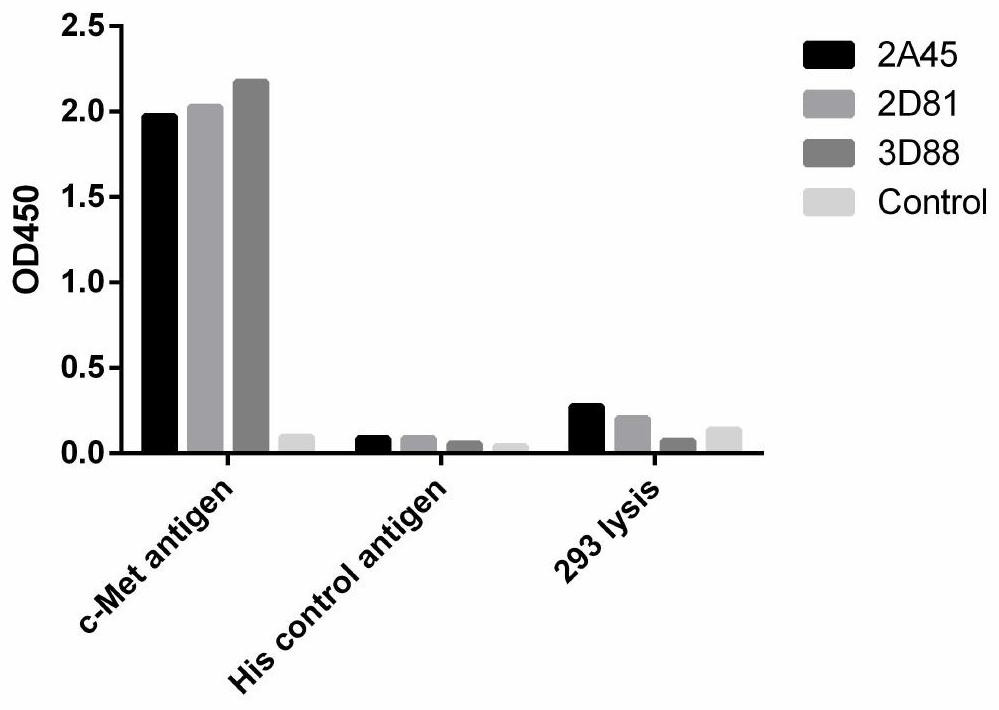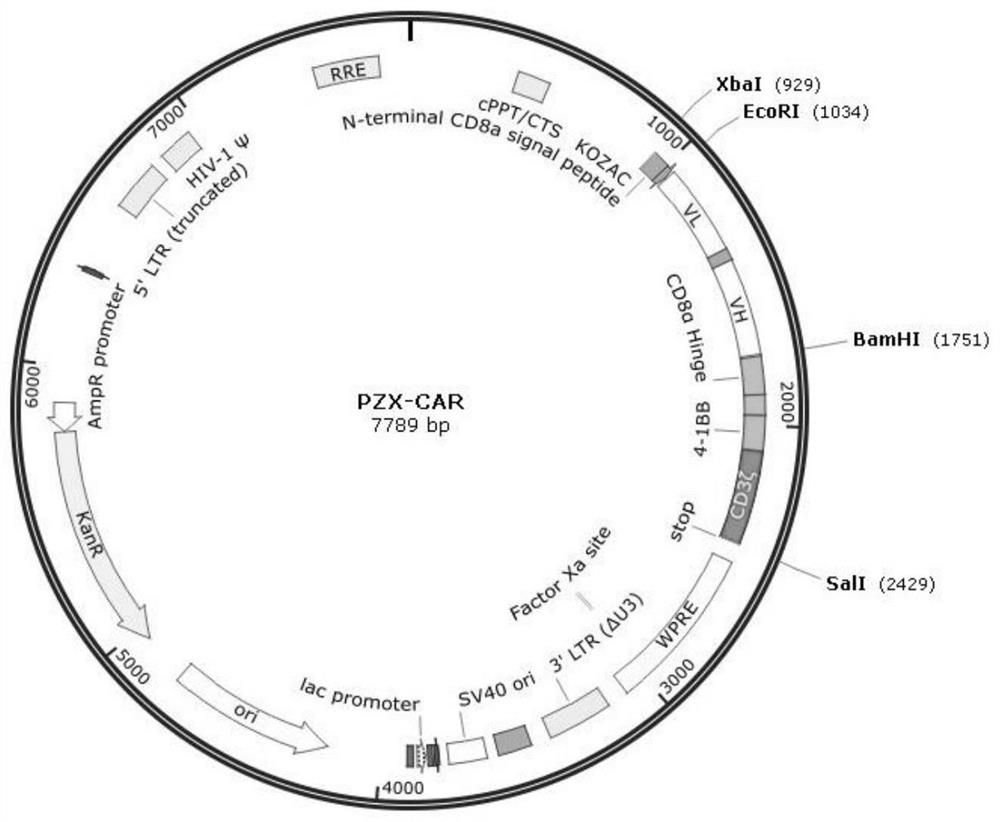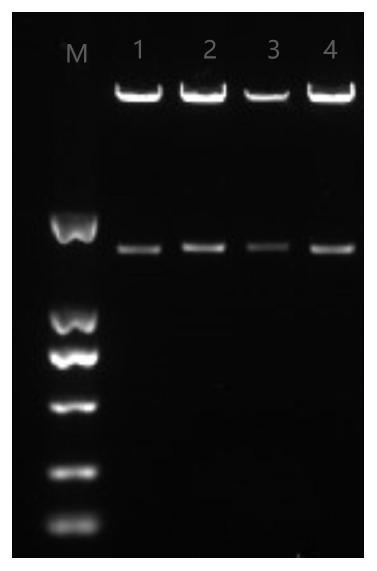Single-chain antibody targeting c-Met, chimeric antigen receptor, recombinant vector, CAR-T cell and application thereof
A chimeric antigen receptor and single-chain antibody technology, applied in the field of tumor treatment, can solve the problems affecting the application effect of CAR-T, and achieve the effect of good tumor suppression effect, prolonging survival period and enhancing ability.
- Summary
- Abstract
- Description
- Claims
- Application Information
AI Technical Summary
Problems solved by technology
Method used
Image
Examples
preparation example Construction
[0072] The invention provides a chimeric antigen receptor T cell targeting c-Met, which is obtained by transfecting T cells with the recombinant vector targeting c-Met. In the present invention, the method for preparing chimeric antigen receptor T cells targeting c-Met preferably includes the following steps: 1) separating and culturing T cells from the peripheral blood of healthy people; The virus vector and the cultured T cells described in step 1) are mixed and transfected to obtain the chimeric antigen receptor T cells targeting c-Met. In the present invention, there is no special limitation on the separation method of the T cells, and the conventional T cell separation method in the field can be used; in the present invention, after the separation, the T cells are placed in X-VIVO+100U IL2 complete culture medium and add CD3 / CD28 magnetic beads to culture; the culture is preferably carried out in an incubator, the temperature of the culture is preferably 37°C, the carbon ...
Embodiment 1
[0076] Phage Display Screening for Variable Region Sequences
[0077] Total RNA was extracted from the spleen and bone marrow of mice immunized with c-Met extracellular antigen using the trizol method, and the mouse antibody variable region gene was amplified using the mouse antibody scFv gene amplification kit (Cat. No.: P001Z), and a segment composed of multiple The peptide linker Linker (hinge region sequence: SSGGGGSGGGGGGSSRSS) composed of glycine (Gly) and serine (Ser) connects the heavy chain and light chain variable regions of the antibody to form a single-chain antibody gene fragment scFv, and clone the scFv single-chain antibody gene fragment into In the phagemid vector pCANTAB5E, a scFv phage display library was constructed, so that the single-chain antibody scFv could be displayed and expressed in the phage display library. After plasmid extraction, the phage plasmids were electrotransformed to build a library with a storage capacity of ≥10 8 . Subsequently, the ...
Embodiment 2
[0079] CAR plasmid construction
[0080] The idea of CAR sequence construction is as follows: figure 2 shown. Design the following amplification primers according to the sequence of the 3 c-Met-targeting scFv sequences obtained by sequencing,
[0081] 2A45-F: taaggaattcgatgttgtgatgacc (SEQ ID No. 32)
[0082] 2A45-R: ggtggatcctgaggagacggtgac (SEQ ID No. 33)
[0083] 2D81-F: taaggaattccagattgttctctctc (SEQ ID No. 34)
[0084] 2D81-R: ggtggatcctgaggagactgtgag (SEQ ID No. 35)
[0085] 3D88-F: aaggaattcgacgttgtgatgacc (SEQ ID No. 36)
[0086] 3D88-R: gtggatcctgaggagactgtgag (SEQ ID No. 37)
[0087] 2A45, 2D81, 3D88 scFv gene fragments carrying restriction sites were respectively obtained by PCR amplification. The above gene fragments were respectively combined with the PZX-CAR vector (the map of the PZX-CAR vector is as follows: figure 2 shown) were subjected to EcoRI and BamHI double enzyme digestion treatment respectively, after agarose gel electrophoresis, the gel w...
PUM
 Login to View More
Login to View More Abstract
Description
Claims
Application Information
 Login to View More
Login to View More - R&D
- Intellectual Property
- Life Sciences
- Materials
- Tech Scout
- Unparalleled Data Quality
- Higher Quality Content
- 60% Fewer Hallucinations
Browse by: Latest US Patents, China's latest patents, Technical Efficacy Thesaurus, Application Domain, Technology Topic, Popular Technical Reports.
© 2025 PatSnap. All rights reserved.Legal|Privacy policy|Modern Slavery Act Transparency Statement|Sitemap|About US| Contact US: help@patsnap.com



